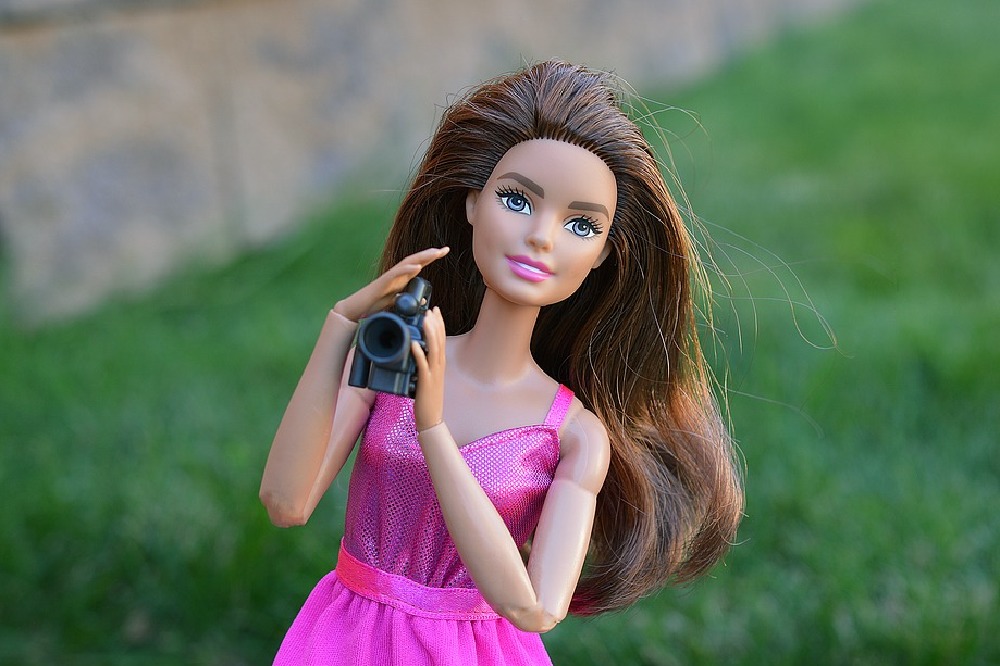Generations of kids have been brought up playing with the impossibly long-limbed toy icon that is Barbie. But do you know the reason why a doll marketed to children ended up with such unrealistically curvy proportions?

What's your view of Barbie?
In 1956, the co-founder of Mattel, Ruth Handler was on a trip to Switzerland with her daughter Barbara. There, the 15 year old Barbara caught sight of a plastic doll in a tobacconist. Originally a comic strip character called Lilli for the Bild-Zeitung newspaper, plastic versions of the high-end call girl Lilli doll had been manufactured and were being sold as an adult novelty toy, popular with stag parties.
Handler bought three of the dolls and took them home to the US. Three years later she introduced her version at the American International Toy Fair in New York. Barbie, named after her daughter, was born.
Barbie was touted as a ‘teenager and fashion model’. The heels, curves and makeup remained from the Lilli doll, as did the pouting lips and sultry expression. Barbie was a lot sexier than the other dolls of her time. Criticised from the beginning, Handler justified this: “Every girl needed a doll through which to project herself into her dream of her future. If she was imagining what she would like when she was 16 or 17, it was stupid to play with a doll that had a flat chest. So I gave it beautiful breasts”.
If Barbie were a real human, her long thin neck would render her incapable of lifting her head; her 16 inch waist would only allow room for half a liver and a few inches of intestine; and her child’s size 3 foot and 6 inch ankles would mean she could only crawl, not walk.
All of this has understandably drawn criticism from parents, concerned that Barbie created unrealistic body image expectations for children and encourages eating disorders.
In 2006, a study from the University of Sussex concluded that thin dolls like Barbie may indeed harm girls’ body image. Their conclusion stated: “The ubiquitous Barbie doll was examined in the present study as a possible cause for young girls’ body dissatisfaction. A total of 162 girls from age 5 to 8 were exposed to images of either Barbie dolls, Emme dolls (US size 16), or no dolls, and then completed assessments of body image.
Girls exposed to Barbie reported lower body esteem and greater desire for a thinner body shape than girls in the other exposure conditions. However, this immediate negative impact of Barbie doll was no longer evident in the oldest girls. These findings imply that, even if dolls cease to function as aspirational role models for older girls, early exposure to dolls epitomising an unrealistically thin body ideal may damage girls’ body image, which would contribute to an increased risk of disordered eating and weight cycling.”
Over the past century, ideal female body shapes have changed dramatically by the decade. But it’s not just history that rings the changes when it comes to ideal body shape, often a culture’s attitude to female shape and size is bound up in socio-economic factors that go far beyond fashion.
So are toymakers such as Mattel simply mirroring the cultural trends and working to please their market, or are they an integral part of setting those trends? The recent ‘You Can Be Anything’ Barbie campaign encouraged children to be free to imagine that they can become anything, which is a drastic contrast to Barbie adverts of old.
Rival doll brands are ushering in a new dawn of doll body shapes. UK supermarket giant Tesco relaunched Sindy – complete with a dramatic makeover. The new look doll is more of a pre-pubescent child than a sexualised woman.
That attitude mirrors the thoughts of Nickolay Lamm, creator of the Lammily doll, which is based on ‘real’ female proportions. It was launched in 2015 following a crowdfunding campaign that attracted more than 13,000 backers and was successfully funded within 24 hours.
The Lammily doll even comes with sticker sets so that children can customise their doll with additions such as scars, spots, grass stains and freckles.
In an interview with The Huffington Post, Lamm said: “Some interpreted the crowdfunding campaign slogan, Average is Beautiful, as a message of inspiring to mediocrity or creating a new societal standard. However, I see ‘average’ as inclusive of all of us, not a standard which excludes. I want to show that reality is beautiful, that life is beautiful…”.
LighterLife combines effective, nutritious plans to help you quickly reach the weight you want, with ground breaking counselling techniques so you can change how you think about food, develop a much healthier approach to eating (and life in general) and live the life you want. Find out more at www.lighterlife.com. For more articles like this, subscribe to Broccoli & Brains magazine at http://broccoliandbrains.co.uk/subscribe/
Tagged in Barbie

